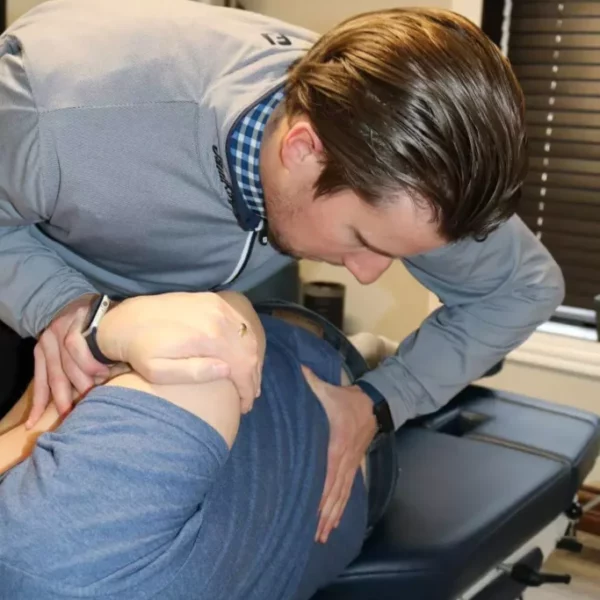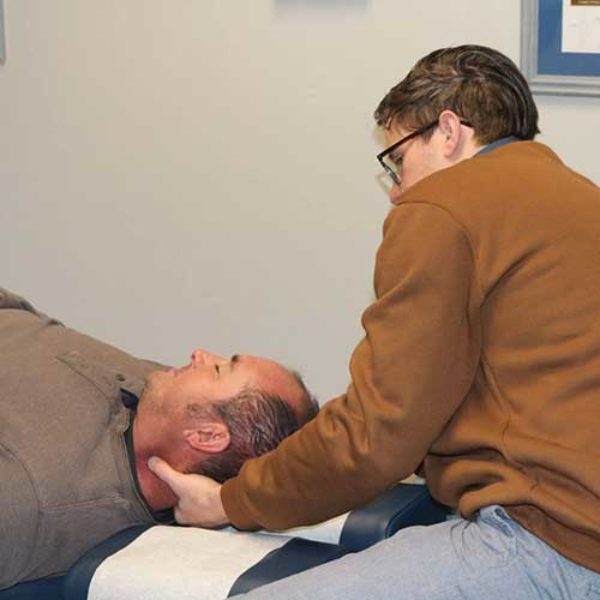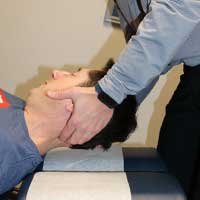Chiropractor for Piriformis Syndrome
If you’re dealing with piriformis syndrome, a chiropractor can provide effective relief through special treatments. Chiropractic care for piriformis syndrome focuses on reducing muscle tension, improving alignment, and easing nerve compression to help healing and pain relief.
What is Piriformis Syndrome
Piriformis syndrome is a condition where the piriformis muscle, located in the buttock region, spasms and causes pain. This muscle can irritate the nearby sciatic nerve, leading to pain, numbness, and tingling along the back of the leg and into the foot. Piriformis syndrome is diagnosed through clinical evaluation and treated with physical therapy, stretching exercises, and sometimes medication or injections to reduce inflammation. Proper diagnosis and treatment of piriformis syndrome are very important to prevent worsening the condition. Proper treatment will also guarantee better quality of life.
Additionally, regular chiropractic care sessions, which may include specific massages and exercises, can help maintain muscle flexibility and reduce the chances of future spasms, providing a long-term relief and better quality of life. Finding a licensed and certified chiropractic practitioner is very important on this step as it ensures not just effectiveness of treatment but also its safety.
What are the Symptoms of Piriformis Syndrome?
Here are the common piriformis syndrome symptoms:
- Buttock Pain. A deep ache in the buttocks, often on one side.
- Radiating Sciatic Pain. Pain that goes from the buttock to back of the leg.
- Numbness and Tingling. Sensations of numbness or tingling along the sciatic nerve pathway.
- Increased Pain with Sitting. Pain that worsens after sitting for long periods.
- Difficulty Sitting. Discomfort and pain when trying to sit.
- Limited Range of Motion. Reduced hip flexibility and difficulty moving the leg.
These symptoms can significantly impact daily activities, making it important to seek appropriate treatment and management.

Causes of Piriformis Syndrome
Here are some common causes:
- Muscle Spasms. Spasms in the piriformis muscle can directly irritate the sciatic nerve.
- Inflammation. Inflammation of the piriformis muscle may appear due to injury or overuse.
- Prolonged Sitting. Extended periods of sitting may be one of the causes, especially in case of sitting on hard and uneven surfaces. .
- Overuse Injury. Repetitive activities like running, cycling, or other exercises.
- Direct Trauma. Injury to the buttock area from a fall or impact.
- Anatomical Variations. Differences in the sciatic nerve’s path or piriformis muscle structure.
- Poor Posture. Incorrect posture that places stress on the lower back and buttocks.
Understanding what causes piriformis syndrome can help in its prevention and treatment.
How Chiropractic Can Help Piriformis Syndrome
Treatment for piriformis syndrome is important as it helps ease pain, improve mobility, and prevent complications. Chiropractic treatment is effective because it focuses on addressing the cause of the problem, which is often related to muscle tightness and nerve compression. By providing specialized care, chiropractors can reduce inflammation and ease pressure on the sciatic nerve, providing noticeable pain relief and improved function.
Piriformis syndrome chiropractic treatment techniques are designed to restore proper muscle function and alignment. Regular piriformis syndrome and chiropractic care can also help prevent the recurrence of symptoms, making it an important component of a piriformis syndrome treatment plan.
Chiropractic Adjustments
Chiropractic adjustments are a central component in the treatment of piriformis syndrome. These adjustments focus on realigning the spine and pelvis to reduce pressure on the piriformis muscle and sciatic nerve. By improving spinal alignment, chiropractic care can ease pain and improve mobility. Regular adjustments can help prevent muscle tightness and nerve compression, which are common piriformis syndrome treatments. Chiropractic care is a non-invasive and drug-free treatment, making it an effective and safe option for managing and treating piriformis syndrome.
Massage Therapy
Massage therapy is an effective treatment for managing piriformis syndrome. A piriformis syndrome chiropractor adds massage therapy to ease muscle tension and reduce inflammation in the piriformis muscle. By applying targeted pressure and using stretching techniques, massage therapy helps to release tight muscles, improve blood flow, and ease pain associated with piriformis syndrome. Regular massage sessions can improve flexibility and promote faster recovery, making it an important component of a treatment plan.
Physical Therapy Exercises
Physical therapy exercises are an important part of piriformis syndrome therapies. Common piriformis syndrome physical therapy exercises include:
- Piriformis Stretch. Lie on your back, cross one leg over the other, and gently pull the knee towards the opposite shoulder.
- Hip Rotations. These exercises help improve flexibility and reduce muscle tightness by rotating the hip inward and outward.
- Strengthening Exercises. Building strength in the gluteal and hip muscles can help support the piriformis and prevent spasms.
Adding these exercises into your routine can improve mobility, decrease pain, and support recovery from piriformis syndrome.

Preventing Piriformis Syndrome
Regular stretching and strengthening exercises for the hips and glutes can help maintain muscle balance and flexibility. Warm up properly before engaging in physical activities to prepare your muscles and reduce the risk of injury.
Maintaining good posture and ergonomics, especially when sitting for long periods, can prevent undue stress on the piriformis muscle. Gradually increase the intensity and duration of your activities to avoid overuse injuries. Add cross-training to balance muscle use and reduce repetitive strain. Staying active and avoiding prolonged periods of inactivity also help keep muscles flexible and strong.
Piriformis Syndrome Treatment at Cross-Up Chiropractic
Choosing Cross-Up Chiropractic for treating piriformis syndrome is a wise decision. Our chiropractic clinic provides care to individual needs, giving the best piriformis syndrome treatment. Our experienced chiropractor for piriformis syndrome uses a holistic way to address the causes of piriformis syndrome, focusing on reducing pain and improving mobility.
At Cross-Up Chiropractic, the treatment plan may include a combination of spinal adjustments, soft tissue therapy, and exercises to ease muscle tension and inflammation. This ensures long-term relief and helps prevent recurrence, making it an effective long piriformis syndrome treatment.
Additionally, our expertise extends to handling complex cases, such as patients requiring a chiropractor for failed back surgery. At Cross-Up Chiropractic we are dedicated to providing care, delivering optimal outcomes and improved quality of life for patients.
Chiropractor – Reviews
Why People Choose our Chiropractors?
Because it’s not about us, it’s about you. We are always looking for your feedback during care because success requires teamwork. You do all the healing, we just have some cool tools and gifted hands to speed it up!

Trusted & Honest Chiropractors

Innovative Chiropractic Treatments

Personalized Care
“Our focus is on finding and fixing the underlying problem – not just masking it.”
Piriformis Syndrome Chiropractor – Frequently Asked Questions (FAQ)
Is chiropractic treatment safe for people with piriformis syndrome?
Chiropractic treatment is generally safe for people with Piriformis Syndrome. A qualified chiropractor can assess your specific condition and develop a treatment plan tailored to your needs. Always inform your chiropractor about any pre-existing medical conditions or concerns.
How many chiropractic sessions will I need?
The number of sessions needed varies from person to person and depends on the severity of the condition and how well you respond to treatment. A qualified chiropractor will provide a personalized plan and adjust it as necessary based on your progress.
What does a chiropractor do for piriformis syndrome?
A chiropractor will work to alleviate the symptoms of Piriformis Syndrome by focusing on relieving tension and improving mobility. They will create a treatment plan designed to address the underlying causes of your discomfort.
What lifestyle changes or home exercises can support chiropractic treatment for piriformis syndrome?
In addition to chiropractic treatment, certain lifestyle changes and home exercises can help manage and alleviate the symptoms of Piriformis Syndrome. A qualified chiropractor can recommend specific adjustments to your daily routine and exercises that can enhance the effectiveness of your treatment.
Conditions We Treat With Chiropractic
CHIROPRACTORS FOR FAMILY CARE AND SPORTS MEDICINE
Chiropractic + Rehab
Additional Services We Offer
It is our goal to provide you with the highest quality of care and a successful experience. Our family taking care of yours!
Contact Us
We value trust and honesty at Cross-Up Chiropractic and strive to provide all of our patients with the best health care experience. Please feel free to ask us any questions, so that we may comfort your mind and accommodate your needs.









